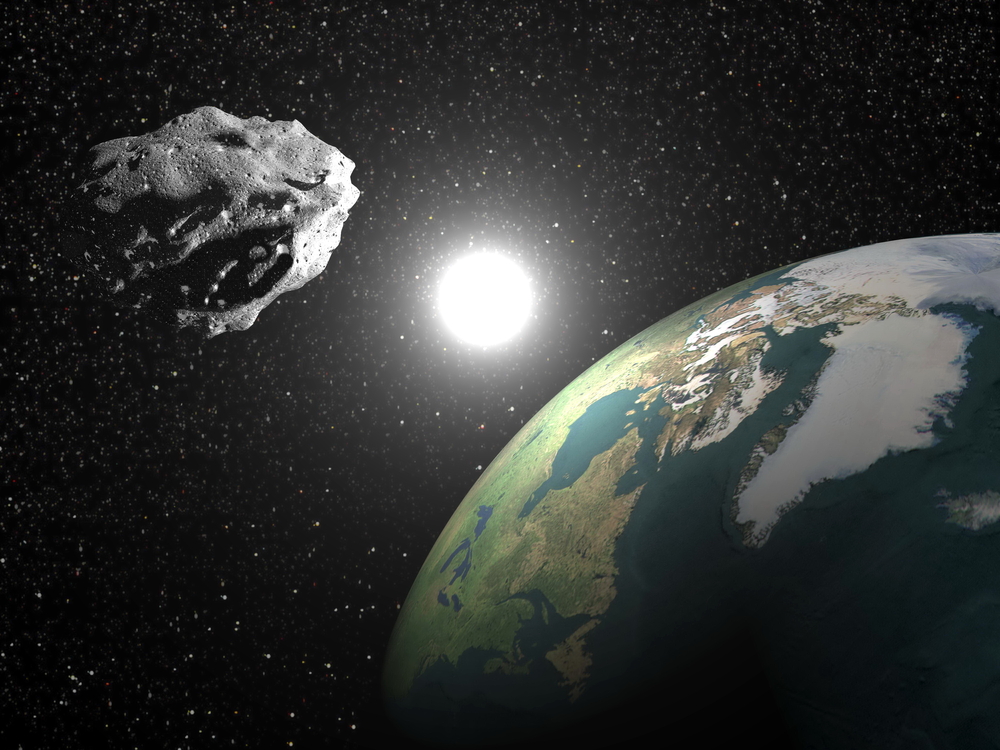
If a space rock were to hit the Earth at just the right location in the oceans, it could cause massive waves that could inundate U.S. coastlines, a new computer simulation suggests.
For instance, if an asteroid were to hit the continental shelf off the Maryland coast, it could produce 23-foot-high (7 meters) waves, causing flooding from New York to Georgia that would take hours to recede. A similar impact off the coast of California could flood major power plants along the coast, the research also suggests.
But not everyone is worried. Many simulations use unrealistic models for how waves break in the ocean, and major ocean impacts in the past haven't caused tsunamis, said H. Jay Melosh, a planetary scientist at Purdue University in Indiana who studies impacts but was not involved in the new study.
"It's an overrated hazard," Melosh, who has developed a calculator to predict the effects of asteroids, told Live Science. [When Space Attacks: The 6 Craziest Meteor Impacts]
Crash!
Asteroid impacts like the one that struck in what's now Chicxulub, Mexico, 65 million years ago — which is believed to have caused the extinction of the dinosaurs — occur very rarely. But smaller space rocks, such as the meteor explosion that blasted through the atmosphere in Chelyabinsk, Russia, in 2013, can cause major property damage and batter the Earth every few decades.
To evaluate the threat of such smaller impacts to U.S. coastlines, Souheil Ezzedine, an applied mathematician at Lawrence Livermore National Laboratory in California, and his colleagues used a computer simulation to mimic how asteroids of about 165 feet (50 meters) in diameter crashing into the ocean would affect waves.
Get the world’s most fascinating discoveries delivered straight to your inbox.
In a separate simulation, Ezzedine also modeled the effects of similar impacts on the West Coast. He found that impacts at certain points in the ocean could lead to waves up to 10 feet (3 meters) high.
"That's not good news. A lot of power plants of PG&E are pretty much on the shore," Ezzedine told Live Science.
In fact, a 2012 report by the California Energy Commission suggests that a 5-foot (1.4-meter) rise in sea levels — which is predicted to occur by 2100, due to climate change — could flood many power plants. Therefore, the even-higher waves that could come from an asteroid impact would likely flood the power plants as well, Ezzedine said.
Threat overblown?
But many experts think the risk of an asteroid-caused tsunami has been overhyped.
An upcoming study which will be published in the journal Earth and Planetary Sciences found that the Eltanin impact, which left a huge crater in the ocean floor off the coast of Chile 2.1 million years ago, didn't cause a tsunami. The asteroid that caused this impact was likely 0.9 to 1.2 miles (1.5 to 2 kilometers) in diameter — far larger than the relatively small rocks Ezzedine's team has modeled. If such a massive rock didn't cause problems, it seems even less likely that a relatively meager one could, Melosh said.
In addition, past models that found monster wave heights were based on flawed assumptions about how waves break in the ocean. These models predict wave heights that exceed the depth of the ocean at that point — a physical impossibility, Melosh said.
Instead, what would actually happen would be that "a big wave gets made by the impact and it's a very turbulent wave, and it breaks immediately, right next to the impact," Melosh told Live Science. "Very little energy is actually radiated away."
There are other risks, besides tsunamis, that could come from relatively small space rocks like the Chelyabinsk meteor impact. In the Chelyabinsk impact, the space rock burned up in the atmosphere, but air blasts caused significant property damage, Melosh said.
Follow Tia Ghose on Twitter and Google+. Follow Live Science @livescience, Facebook & Google+. Originally published on Live Science.

Tia is the editor-in-chief (premium) and was formerly managing editor and senior writer for Live Science. Her work has appeared in Scientific American, Wired.com, Science News and other outlets. She holds a master's degree in bioengineering from the University of Washington, a graduate certificate in science writing from UC Santa Cruz and a bachelor's degree in mechanical engineering from the University of Texas at Austin. Tia was part of a team at the Milwaukee Journal Sentinel that published the Empty Cradles series on preterm births, which won multiple awards, including the 2012 Casey Medal for Meritorious Journalism.
 Live Science Plus
Live Science Plus





